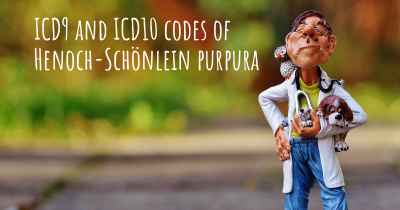What is the history of Henoch-Schönlein purpura?
When was Henoch-Schönlein purpura discovered? What is the story of this discovery? Was it coincidence or not?

Henoch-Schönlein purpura (HSP), also known as IgA vasculitis, is a rare autoimmune disease that primarily affects children but can also occur in adults. It is characterized by inflammation of the small blood vessels, leading to the development of a distinctive rash called purpura, joint pain, gastrointestinal symptoms, and kidney involvement. The history of HSP dates back to the late 19th century when it was first described by two physicians, Eduard Henoch and Johann Schönlein, who independently recognized the unique features of the disease.
Eduard Henoch, a German pediatrician, was the first to document the clinical presentation of HSP in 1874. He observed a group of children with a rash, joint pain, and abdominal symptoms, which he initially believed to be a variant of scarlet fever. However, he soon realized that this condition was distinct and named it "purpura rheumatica." Henoch's initial description laid the foundation for understanding the disease and its characteristic symptoms.
Johann Schönlein, a German physician, independently described a similar condition in 1808, which he referred to as "peliosis rheumatica." Schönlein's observations were based on a case series of patients who presented with purpura, joint pain, and gastrointestinal symptoms. He recognized the association between these symptoms and the involvement of blood vessels, thus providing further insight into the disease.
Over the years, the disease was referred to by various names, including Henoch's purpura, Schönlein-Henoch purpura, and anaphylactoid purpura. However, in the late 20th century, it was officially named Henoch-Schönlein purpura to honor the contributions of both physicians in recognizing and describing the condition.
The exact cause of HSP remains unknown, but it is believed to involve an abnormal immune response triggered by various factors such as infections, medications, or environmental exposures. The immune system produces an excess of immunoglobulin A (IgA) antibodies, which deposit in the blood vessel walls, leading to inflammation and damage.
The clinical presentation of HSP typically begins with a non-specific upper respiratory tract infection or gastrointestinal illness. Shortly after, the characteristic rash appears, consisting of small, raised, purplish spots (purpura) on the skin, usually on the lower extremities. The rash may be accompanied by joint pain and swelling, particularly in the knees and ankles. Abdominal pain, nausea, vomiting, and bloody stools are also common symptoms due to gastrointestinal involvement. In some cases, kidney involvement can occur, leading to blood in the urine and proteinuria.
Diagnosing HSP involves a combination of clinical evaluation, laboratory tests, and a skin biopsy. The presence of purpura, along with other characteristic symptoms, helps in establishing the diagnosis. Laboratory tests may reveal elevated levels of IgA antibodies and signs of inflammation. A skin biopsy can confirm the presence of IgA deposits in the blood vessel walls.
Treatment of HSP focuses on managing the symptoms and preventing complications. In most cases, the disease resolves on its own within a few weeks to months without specific treatment. However, symptomatic relief can be achieved through the use of nonsteroidal anti-inflammatory drugs (NSAIDs) to alleviate joint pain and abdominal discomfort. Severe cases with kidney involvement may require corticosteroids or other immunosuppressive medications to reduce inflammation and protect kidney function.
Prognosis for HSP is generally favorable, with the majority of patients recovering completely without long-term complications. However, in rare cases, kidney involvement can lead to persistent kidney damage or chronic kidney disease. Close monitoring of kidney function is essential in such cases.
In conclusion, Henoch-Schönlein purpura is a rare autoimmune disease that was first described by Eduard Henoch and Johann Schönlein in the late 19th century. Their independent observations of the characteristic symptoms and involvement of blood vessels laid the foundation for understanding this unique condition. Although the exact cause of HSP remains unknown, it is recognized as an abnormal immune response leading to inflammation and damage in the small blood vessels. Prompt diagnosis and appropriate management can help alleviate symptoms and prevent complications, ensuring a favorable prognosis for most individuals affected by this condition.
Posted Oct 5, 2019 by Amy 13500








